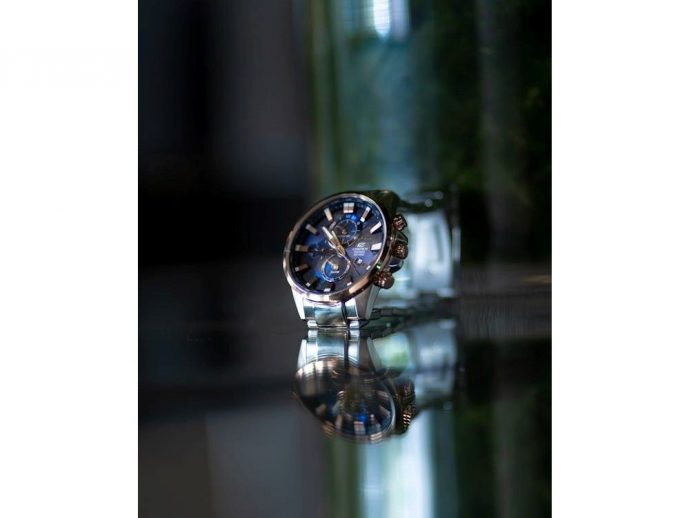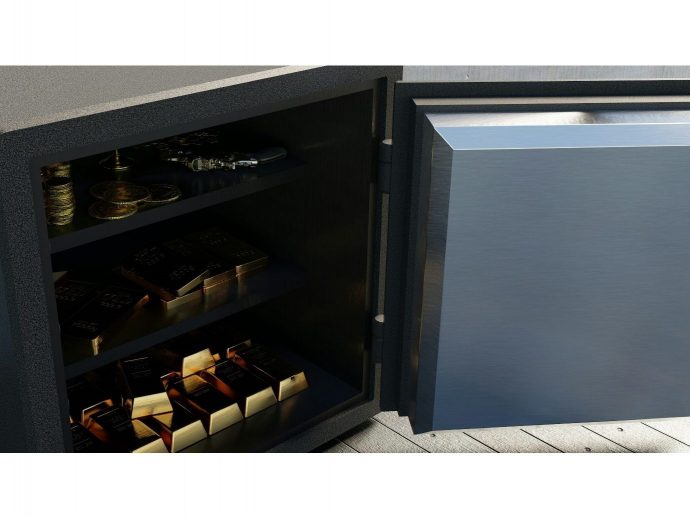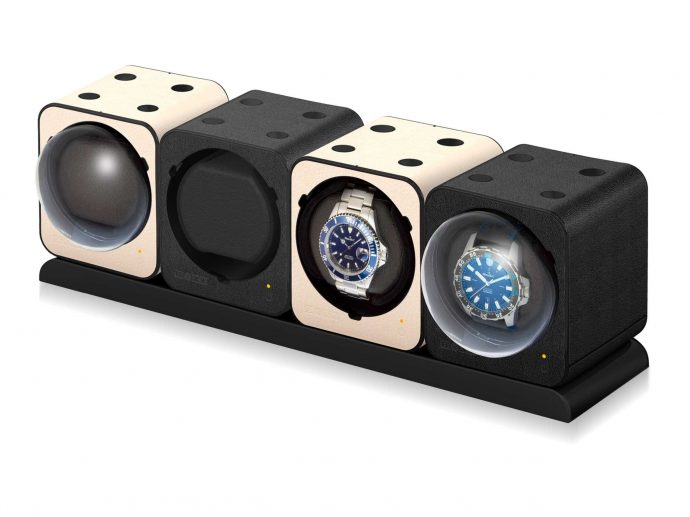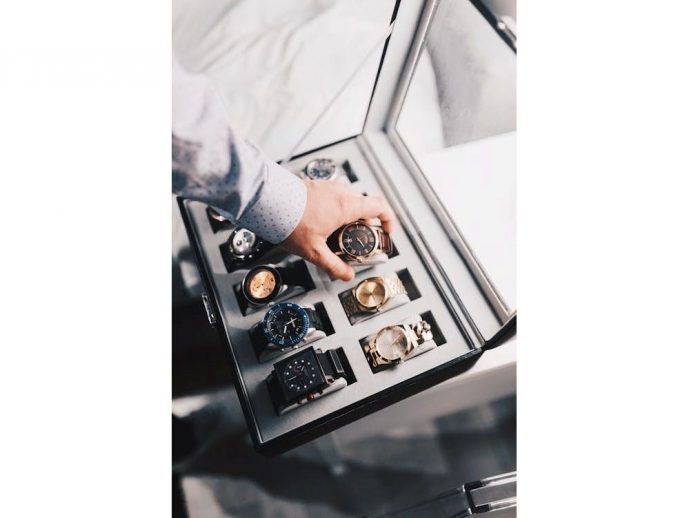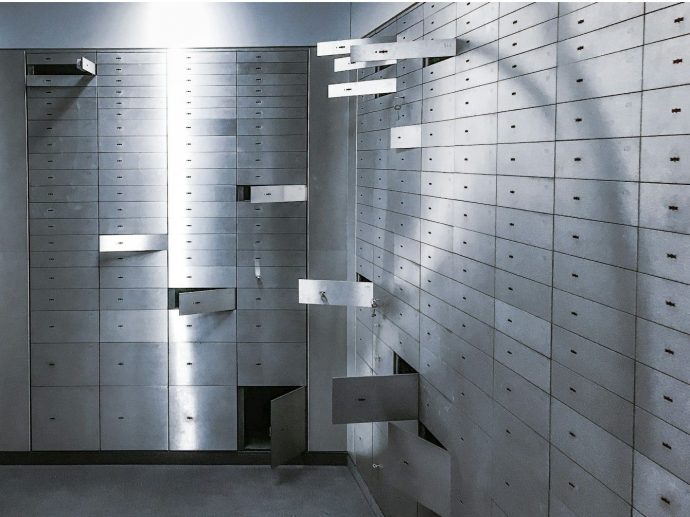Categories more
- Adventures (17)
- Arts / Collectables (15)
- Automotive (37)
- Aviation (11)
- Bath, Body, & Health (77)
- Children (6)
- Cigars / Spirits (32)
- Cuisine (16)
- Design/Architecture (22)
- Electronics (13)
- Entertainment (4)
- Event Planning (5)
- Fashion (46)
- Finance (9)
- Gifts / Misc (6)
- Home Decor (45)
- Jewelry (42)
- Pets (3)
- Philanthropy (1)
- Real Estate (16)
- Services (23)
- Sports / Golf (14)
- Vacation / Travel (59)
- Watches / Pens (14)
- Wines / Vines (24)
- Yachting / Boating (17)
Where To Store A Luxury Watch
Published
08/26/2024Investing in a luxury timepiece goes beyond acquiring a functional accessory.
A luxury watch is a blend of artistry, precision, and heritage.
Proper storage is essential for maintaining its condition, value, and longevity.
Managing the Environment: Temperature and Humidity Control
The storage environment plays a crucial role in the lifespan of your watch.
Temperature stability affects the internal lubricants, which are designed to function within a specific range. Cold can cause these oils to thicken, leading to increased wear, while heat can thin them, reducing their effectiveness and potentially damaging the movement.
Humidity is another factor to consider. Even with water-resistant seals, prolonged exposure to moisture can lead to internal corrosion (source). To protect your watch, monitor the humidity levels with a hygrometer and use silica gel packs or a dehumidifier if necessary.
Think of it like this: Just as a mechanical instrument thrives in controlled conditions, your watch benefits from a stable environment, ensuring it remains in top condition every time you wear it.
Prioritizing Security: Protecting Your Investment
Security is paramount when it comes to storing a watch. A safe that is securely anchored offers strong protection against theft. The higher the value of the watch, the more likely it is to be desirable to thieves (source).
Consider the location of the safe—discreet placement reduces the likelihood of it being discovered. For those with multiple watches, diversifying storage locations adds an extra layer of protection, minimizing risk.
Digital security is equally important. Be cautious about sharing images of your collection online, as this can attract unwanted attention. If you must share, avoid revealing any identifying details that could lead someone to your location.
Summary: Investing in robust security measures and being mindful of online exposure can significantly reduce the risk of theft or loss.
Maintaining Accuracy: The Role of Watch Winders
A watch winder is more than a convenience; it’s a key tool for keeping your watch running smoothly, particularly if it has complications like a perpetual calendar. Resetting these features can be time-consuming, and a winder ensures they remain accurate.
However, not all winders are equal. According to 1010 Boutique, it’s important to select one with programmable rotation settings that align with your watch’s needs.
Different watches have specific requirements for the number of turns per day and the direction of winding. A winder that doesn’t match these specifications can cause more harm than good.
Material quality also matters. A winder with a silent motor and efficient heat dissipation will protect your watch and add to the appeal of your storage area.
Key Point: A high-quality, programmable winder preserves your watch's function and reduces the frequency of manual adjustments.
Daily Storage: The Watch Box and Soft Pouch
For an ideal blend of protection and presentation, consider choosing to store your timepieces in a secure and sleek watch box that complements both functionality and style.
Avoid materials containing acidic compounds, which can tarnish metals over time.
Orientation is also important. Storing a watch flat for long periods can cause the lubricants within the movement to settle unevenly, affecting accuracy.
Opt for a box or pouch that allows for an upright position, reducing this risk.
Takeaway: The right storage materials and orientation preserve your watch's aesthetic and functional qualities over time.
Long-Term Storage: Vaults and Insurance
When storing your watch for an extended period, bank vaults offer the highest level of security.
However, not all vaults are climate-controlled, which could affect your watch over time.
Be sure to inquire about the environment within the vault and consider using silica gel packs if necessary.
Insurance is a vital aspect of protection. Ensure your policy covers any appreciation in value, especially for rare or limited-edition models. Regular appraisals are essential, as the market for premium watches can fluctuate, and an outdated appraisal may leave you underinsured.
Long-term storage isn’t just about safety; it’s about aligning every detail, from environmental conditions to insurance coverage, with the value of your timepiece.
Preserving Longevity: The Importance of Regular Maintenance
Even with ideal storage, regular servicing is necessary to keep your watch in prime condition.
It’s advisable to service your watch not only at scheduled intervals but also after any significant period of use (source).
A specialist service center, particularly one authorized by your watch’s brand, ensures that only original parts are used, maintaining the watch’s integrity.
A good watch deserves the attention of experts who understand every nuance, from the movement’s precision to the luster of the case. Regular, expert care ensures it remains a symbol of excellence for generations.
Summary
- Environment matters: Stable temperature and humidity levels protect your watch's mechanical integrity.
- Security is crucial: Use a high-quality safe and be mindful of digital exposure to reduce theft risks.
- Watch winders preserve function: Choose a programmable winder tailored to your watch's specific needs.
- Daily storage essentials: Opt for materials that prevent tarnish and store your watch upright.
- Long-term considerations: Combine secure vault storage with up-to-date insurance for maximum protection.
Proper storage for a high-end watch extends far beyond security. By addressing environmental factors, security, and regular maintenance, you ensure that your investment remains cherished today and well into the future.















